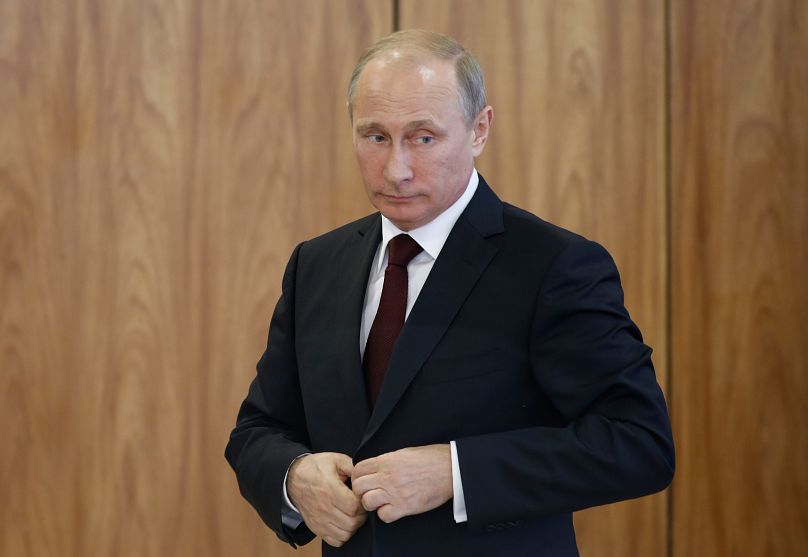Global investors, including those in Europe, will be closely watching what actions will be taken at the November OPEC+ meeting, which will shed more light on the next steps of the major oil-producing countries.
Set for Thursday 30 November, this meeting will be well marked on the calendar of global investors as the outcome of it has the power to shape oil markets on the continent and beyond.
Firstly, what is OPEC+? It is a committee made up of the original Organisation of Petroleum Exporting Countries (OPEC), as well as its allies.
The original members are the United Arab Emirates, Iraq, Iran, Kuwait, Saudi Arabia, Venezuela, Algeria, Angola, Gabon, Nigeria, Libya, Republic of Congo and Equatorial Guinea.
The non-OPEC countries, or allies, are Russia, Kazakhstan, Bahrain, Brunei, Malaysia, Azerbaijan, Mexico, Sudan, South Sudan and Oman. Essentially, the members are all from the major oil-producing countries.
What to expect at the November meeting?
For November, the OPEC+ committee is likely to stick with its supply cuts for this month’s agenda, however, there are also chances that it may go for even deeper crude output cuts. This is largely due to Brent crude oil prices falling lately. Prices are currently near $81 per barrel, down from about $98 per barrel at the end of September.
If more cuts are introduced this month, they may only go so far to bolster oil prices, as other factors such as demand do not seem to be increasing proportionate. Higher interest rates have also further dampened oil market sentiment, as well as increasing production from the US, which is not part of OPEC+.
Ahead of this month’s meeting, the committee has also dealt with a few disagreements. This was primarily due to some members contemplating a split in the last few weeks due to quota disagreements, pushing the meeting back from November 26 to November 30. This unexpected delay also further weakened global oil prices.
African producers, such as Angola, Nigeria and Republic of Congo are the ones reported to have more of an issue with the OPEC+’s decision to cut supplies further. This is because each oil producing country or ally is given a certain quota to meet, by the OPEC+ committee, and it is in their best interest to try to secure the highest quota possible.
During the committee’s June meeting, these countries were amongst those that were assigned a lower production target, following issues meeting higher ones earlier. As of mid-November, Nigeria was producing about 1.7 million barrels of crude oil, with plans to increase production to 1.8 million barrels by the end of the year.
However, this may still not be enough for the committee’s proposed 2024 quota plan, with Angola also lagging behind, despite investments to increase production. As of now, these three countries have been put under review by OPEC+, in order to investigate production capacities.
For the review, IHS, Wood Mackenzie and Rystad Energy have been hired.
Why is OPEC+ so important for oil markets?
OPEC+ decisions are especially important as they help regulate global oil supply, as a result, impacting oil prices. As the committee controls about 60% of international petroleum trade, as well as 80% of known oil reserves, they have a significant amount of influence on oil markets.
During times of weakening demand and falling oil prices, the committee may decide to cut production, to try and buoy oil prices. This was most recently seen back in June, when Saudi Arabia voluntarily announced that it would be making a reduction of 1 million barrels a day, in order to boost oil prices further. This cut is likely to continue until the end of the year, with 2024’s supply also being quite limited.
Russia also followed suit and decided in August 2023 to reduce output by 300,000 barrels per day until the end of December 2023. At the upcoming meeting, Russia is expected to revisit this policy and decide whether to stick with it, go for a deeper reduction or increase production.
In the wake of the Israel-Hamas conflict, however, the situation has become even more complicated. Saudi Arabia and other Arab oil producers have been accused of wanting to extend or deepen production cuts in an attempt to retaliate against Western support of Israel.
As a result, these producers have been accused of trying to “weaponise” oil , using their influence in oil markets. Saudi Arabia has also used this tactic to “punish” other non-compliant OPEC+ members, such as Venezuela, or Nigeria at times, who may refuse to stick to output cuts and collective decisions of the committee.
For November, in case the OPEC+ committee does not reach an unanimous decision on whether to extend or deepen production cuts, Saudi Arabia and other larger players may continue to opt for voluntary cuts.
In this case, the committee may also decide to slightly adjust production baselines for other member countries, which will not really translate into major cuts, but will go a long way in presenting a unified front to the world.
What could impact oil markets in 2024?
Currently, oil demand for the first quarter of 2024 is expected to be quite weak, due to slowing global demand and several key economies such as China still struggling to recover adequately. The increased drive to move towards clean energy sources, driven by the introduction of the US Inflation Reduction Act, as well as the reinforcing of climate goals during the COP28 summit, is also likely to further impact oil demand.
However, ongoing geopolitical factors such as the Russia-Ukraine war and the Israel-Hamas conflict are key factors in determining oil demand in the next few months. Although markets have largely priced in the effects of the Russian war, any changes there would cause fresh price shocks and supply chain troubles for oil markets.
The Israel-Hamas conflict is being more closely watched at the moment, due to increased speculation of it spilling over to a wider Middle-Eastern conflict. In such a scenario, other Arab oil producers such as Iran, Iraq, Oman, Saudi Arabia and more could be implicated, both for their direct and indirect support for the warring parties.
Although an agreement has been reached with dissenting African producers regarding oil supply for the November meeting now, the OPEC+ committee has been vulnerable to more disagreements lately. As the energy transition progresses, especially if global oil demand does not pick up appropriately, these fights could get worse and may even lead to a split within the committee in the worst case scenario.













